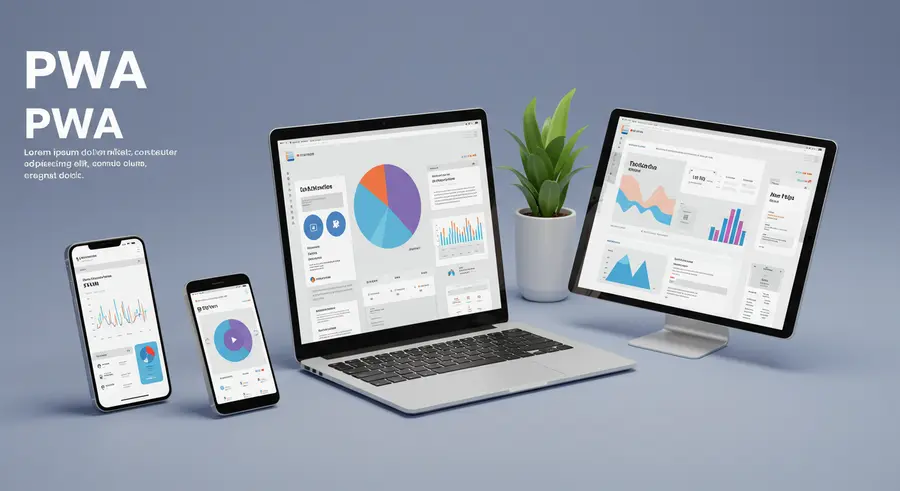Appearance

Welcome, fellow tech enthusiasts and web innovators! 👋 Today, we're diving deep into a technology that's been quietly revolutionizing how we experience the web: Progressive Web Apps (PWAs). Forget the old debate of native apps vs. web apps – PWAs offer a compelling third way, blending the best of both worlds. Let's explore what makes PWAs so powerful and why they are becoming a cornerstone of modern web development.
What Exactly is a PWA? 🤔
At its core, a Progressive Web App is a web application that uses modern web capabilities to deliver an app-like experience to users. Think of it as a website that can behave like a native mobile application, offering features such as:
- Offline Access: Work even when there's no internet connection! 🔌
- Push Notifications: Re-engage users with timely, relevant updates. 🔔
- Installability: Add to home screen, appearing like a regular app icon. 📱
- Fast Loading: Thanks to caching and service workers, PWAs load almost instantly. ⚡
- Responsive Design: Adapt to any screen size – desktop, tablet, or mobile. 🖥️ portable 📱
The "progressive" in PWA means they work for every user, regardless of browser choice or network connectivity, and progressively enhance with advanced features when a user's browser supports them.
The Magic Behind PWAs: Key Technologies ✨
PWAs leverage a few crucial web technologies to deliver their magic:
- Service Workers: These are JavaScript files that run in the background, separate from the main browser thread. They act as a programmable proxy between the web app and the network, enabling powerful features like offline caching, push notifications, and background synchronization. Imagine a super-smart middleman handling all your data requests! 🛠️
- Web App Manifest: A simple JSON file that tells the browser about your PWA. It defines things like the app's name, start URL, icons, display mode (fullscreen, standalone), and theme colors. This manifest is what allows users to "install" the PWA to their home screen. 📁
- HTTPS: Security is paramount! PWAs must be served over HTTPS to ensure that service workers and all communication are secure and prevent snooping. 🔒
Advantages of Progressive Web Apps 🏆
PWAs offer a plethora of benefits for both users and developers:
- Enhanced User Experience: PWAs provide a smooth, fast, and engaging experience, often indistinguishable from native apps.
- Improved Performance: With intelligent caching via service workers, PWAs load quickly and perform efficiently, even on flaky networks.
- Increased Engagement: Push notifications allow for re-engagement, bringing users back to your app, much like native apps do.
- Lower Development and Maintenance Costs: You write one codebase for the web that works across multiple platforms (iOS, Android, Desktop), significantly reducing development time and cost compared to building separate native apps.
- No App Store Hassle: PWAs are discovered through the web, eliminating the need for app store submissions, approvals, and their associated fees. Updates are also instant!
- Offline Functionality: A game-changer for areas with poor connectivity or for users on the go.
- SEO Benefits: Being web-based, PWAs are discoverable by search engines, potentially increasing visibility.
Disadvantages and Considerations 🤔
While PWAs are fantastic, they do have some limitations compared to native apps:
- Limited Hardware Access: PWAs generally have less access to device hardware features (e.g., advanced camera controls, NFC, Bluetooth) compared to native applications, although this gap is continually closing with new web APIs.
- Less Discoverability in App Stores: While a benefit for skipping app store bureaucracy, it also means you miss out on the organic discovery that app stores provide.
- Battery Usage: In some complex scenarios, PWAs might be less optimized for battery consumption than highly optimized native apps.
- No Background Code Execution (mostly): Service workers have limitations on how long they can run in the background, which can affect tasks requiring continuous background processing.
Real-World Examples of Successful PWAs 🌍
Many major companies have embraced PWAs to deliver exceptional user experiences:
- Starbucks: Their PWA allows users to browse the menu, customize orders, and add items to their cart offline.
- Twitter Lite: A highly performant PWA that provides a fast, data-friendly experience, especially in regions with slower network speeds.
- Pinterest: Saw a significant increase in user engagement and ad revenue after launching their PWA.
- Forbes: Experienced a massive boost in scroll depth and session duration with their PWA.
Conclusion: The Future is Progressive 🌟
Progressive Web Apps are not just a trend; they represent a fundamental shift in how we think about web development. They empower developers to build highly capable, reliable, and installable web experiences that truly bridge the gap between the web and native applications.
As web technologies continue to evolve, the capabilities of PWAs will only grow, making them an increasingly vital tool in every developer's arsenal. If you haven't yet explored the potential of PWAs, now is the perfect time to start your journey!
For more insights into web development trends and technologies, check out our catalogue, especially the section on The Power of Progressive Web Apps!
Stay progressive! 💡